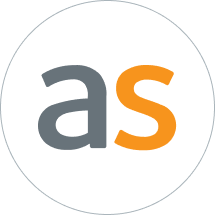Saving for the future can be a challenge, especially when you don't know which financial vehicles are the best to help you meet the goals of you and your family. RRSPs, TFSAs and RESPs are different types of savings accounts for different stages of life and financial goals.
Registered Retirement Savings Plan (RRSP)
What is an RRSP?
An RRSP is a retirement savings tool registered with the federal government, that is intended to be used when you retire. For many Canadians, this is their primary type of retirement savings.
Do you need an RRSP?
The short answer? Yes. If you are old enough to earn a paycheque and pay taxes, you should invest in an RRSP. An RRSP is a fantastic savings tool that allows you to set aside money in a secured account that will grow, tax-free until it's time to withdraw. Any money withdrawn from an RRSP is considered taxable, so you won't want to invest money into this type of account unless you're sure you won't need access to it until you retire.
Tax-free withdrawal opportunities
There are only a few exceptions where you can withdraw money from an RRSP, without tax implications. The first is for the Home Buyers’ Plan (HBP), which allows you to take up to $35,000 from your RRSP, tax free, to put towards your first home. The second, is for going back to school, with the Lifelong Learning Plan (LLP), allowing you withdraw up to $10,000 annually to put towards approved post-secondary education. Both HBP and LLP need to be repaid in full – HBP within 15 years and LLP within 10. Failure to pay back the funds will result in tax implications, with the amount owed considered taxable income.
Taxed withdrawals
Even if you aren’t buying a house or going back to school, you can still access your RRSP if you lose your job, go on maternity leave or for any other reason. In those cases, you withdraw the money, which becomes taxable income.
But I have a pension!
Even if you are fortunate enough to have a pension through your job, there are still tax benefits to enjoy by investing in an RRSP. The money you contribute to your RRSPs will reduce your taxable income, meaning a reduction in your annual tax bill. Plus, it doesn’t hurt to have multiple sources of savings and income when you retire.
Tax-Free Savings Account (TFSA)
What is a TFSA?
A TFSA is a savings account that offers tax-free growth for funds which can be used for retirement savings or shorter-term needs. Contributions are placed into eligible investments and, while not tax-deductible, any income derived from investing the funds is tax-free.
Do you need a TFSA?
Unlike traditional savings accounts that yield little to no returns, TFSAs can be invested in the money markets and earn money for you while being at arms-length. TFSAs can be set up so money can be taken out at any time, but usually requires two days to transfer into your account. This accessibility makes a TFSA a much more flexible tool than an RRSP. (* some may not be applicable based on the type of TFSA products).
The flexibility and benefits of a TFSA make it an essential part of a balanced savings portfolio.
Registered Education Savings Plan (RESP)
What is an RESP?
RESPs are investment tools available for parents or guardians to save money for their children’s post-secondary education.
Do you need an RESP?
If you have children, setting up an RESP is an important step to secure funding for their educational opportunities. RESPs do not enjoy the same tax advantages as an RRSP. They do, however, allow the investment to benefit from the Canada Education Savings Grant (CESG). The CESG provides funds from the Canadian government adding 20% to your RESP contributions annually, up to a maximum of $500 a year. Think of it as being paid by the government for helping to save for your children’s future.
RRSPs, TFSAs and RESPs are all great savings tools to help you plan for the future. If you’re still not sure where you should direct your savings, give us a call. We’ll talk you through all of your options and get you on the right track to achieving your savings goals.







